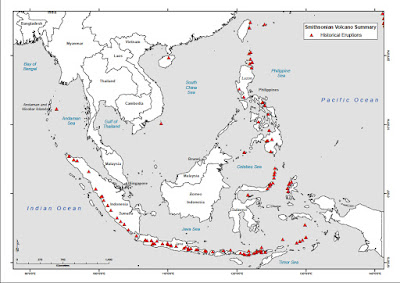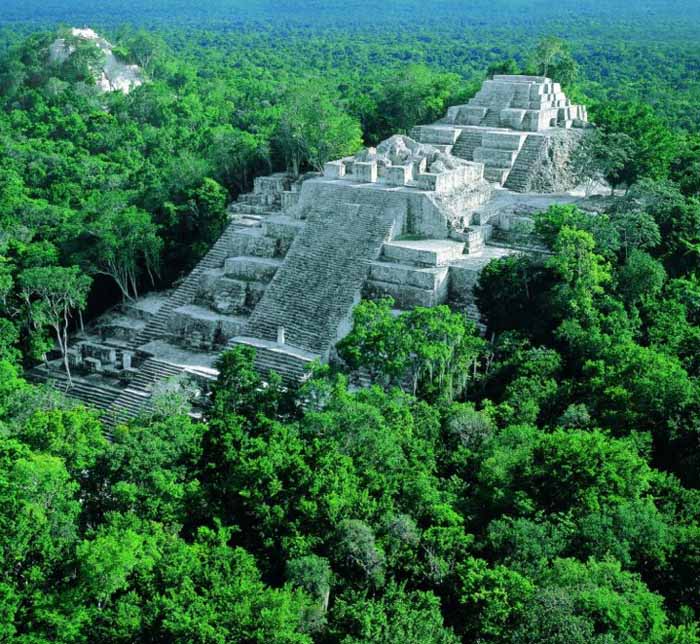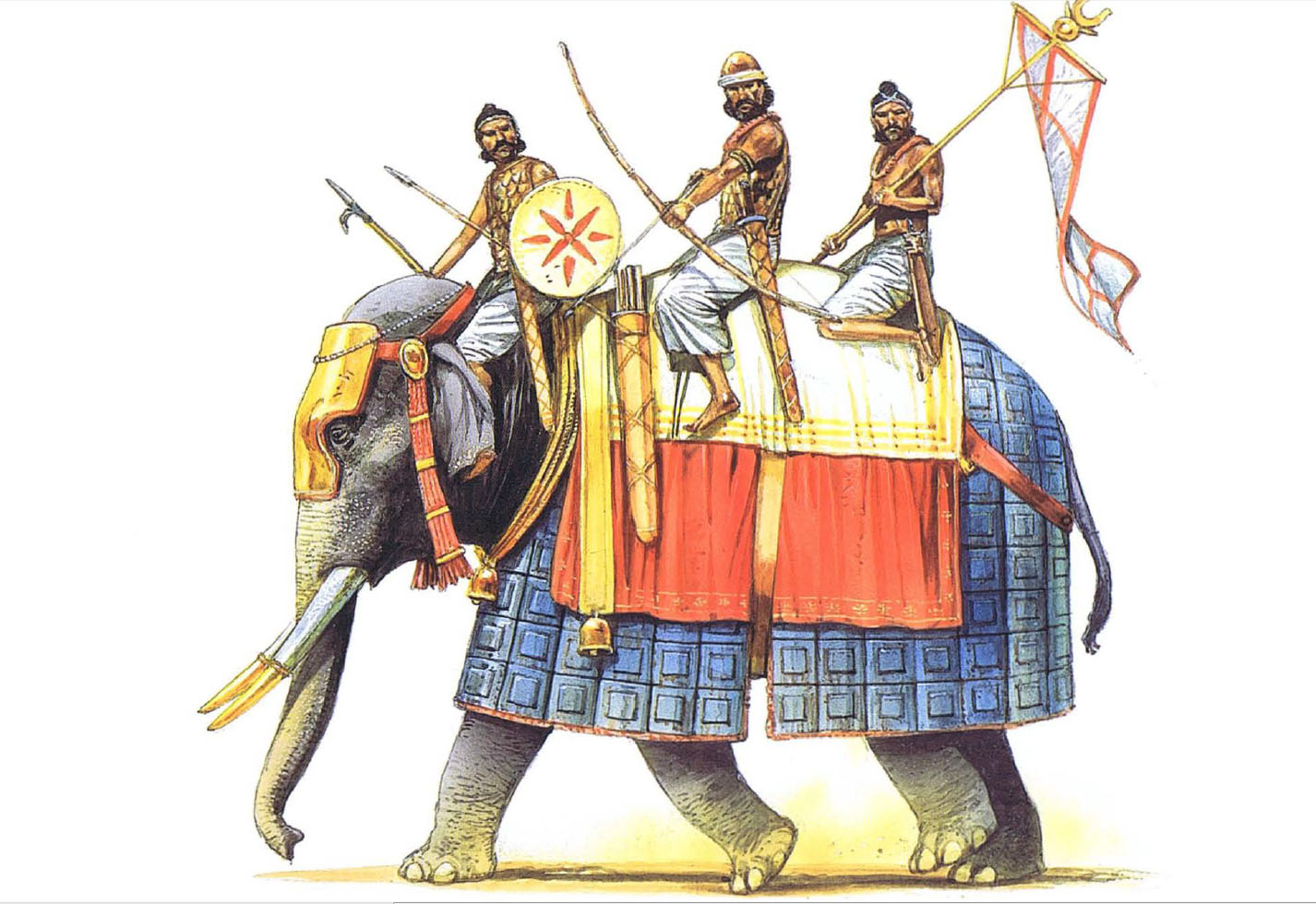I found a website that adjusts the size of countries as you move them around the map to take into account the distortion inherent in projecting a three dimensional sphere on to a two dimensional plane. This will help you get an idea of the size of Sundaland.
Visit the site here and see how different countries compare: TheTrueSize.com
I made a map of Sundaland as it may have looked before the sea levels rose: Sundaland Geographical Map
RPG setting content based on the real sunken subcontinent of Sundaland. Imagine a land where the progenitors of the ancient Egyptian, Mesopotamian, Indus Valley and American cultures came from. I also post about ancient history topics that can serve as inspiration. The overall tone is Bronze Age to Classical Antiquity type civilisations with a touch of Sword & Sorcery.
Wednesday, August 28, 2019
Monday, August 19, 2019
Volcanoes
Sundaland is a land surrounded by mountains that contain fire, smoke and ash. Some of these mountains are known to lie asleep for many ages before cracking and exploding, spreading destruction far and wide.
But the fire destroys the old and provides nourishment for the new. So it is that the foothills and plains nearby have dark and fertile earth.
Many people have settled in those lands where plants grow quickly with bountiful fruit.
And many have perished when the fire comes to start the cycle anew.
- An Account of Sundaland by Alom Takal

Volcanoes have loomed large in the history of humanity. Famous examples include: Thera on Santorini, Pompeii: Eruption of Vesuvius and in Indonesia one of the most powerful in recorded history: Mount Tambora.
The aftermath of a volcano outburst often results in very fertile soil due to a combination of the minerals in the volcanic ash and stone spread across the area, and burnt organic matter. Of course this means these areas are very attractive for human settlements.
The people that live in these areas may develop a non-scientific understanding about the relationship between the volcano and the fertile soil nearby, and their culture and religion may be influenced by this understanding. They may frame volcanoes as one of the many manifestations of an often indifferent universe in which the gods and nature can alternately provide and take away.
Can the gods or nature be appeased in any way?
Or is the cycle of creation and destruction inevitable?
List of volcanoes in Indonesia
Tuesday, August 13, 2019
Frog People of the Sundaland swamps
As travel on the rivers is most common, it is inevitable that one must pass through the many swamps and marshes of the land. These regions offer a constant assault from all manner of animal and insect. Clouds of insatiable mosquitos, ravenous leeches, voracious crocodiles and venomous snakes are just some of the hazards that await.
There are even tribes that make their homes in these foul places, building their homes raised above the water on wooden piles or on the sparsely scattered islands of firm ground. Some of these peoples are open to trade and commerce while others shun all contact from the outside and are known to guard their territory with murderous violence.
The wetlands are some of the most ancient places of Sundaland, where creatures have existed for countless ages before any tribe settled. The locals speak of giant turtles the size of a longhouse and snakes that can swallow a man whole. And then there are other stories told around the fire that strike a deep unease in both the young and fully grown.
It is said that deep in the swamps there exist frogs, almost as tall as a man, nimble with their limbs and minds. Possessing mental faculties beyond any known animal and perhaps even possessing their own speech. Some say they build their own cities, being deep connected underwater caves in which to spawn, and that they tend shallows and ponds for food the way we tend our gardens.
There are grim tales of these beings venturing into villages in the depths of the night to steal away children, or that they sometimes prey upon the fishing canoes, pulling those caught daydreaming about their next catch down into the depths.
Some tribes, having no doubt in the true existence of these creatures, have entered into a gruesome appeasing worship of them. They build shrines to provide offerings of food and valuables, even captured enemies which they will tie to a tree near the water, sometimes even one of their own. Of course few can claim to have actually seen one these frog-people. But all can attest to hearing the screams of the sacrificial victims at night with no trace or trail left behind when the morning comes.
- An Account of Sundaland by Alom Takal

There are many questions and few answers in regards to these frog people. Most accounts paint them as very alien in nature. They have no language or behaviour that is comprehensible to humans, yet often they are described with an uncanny sense of consciousness.
Perhaps they are capable of having a culture, forming societies and building large scale dwellings. But what form these take is not easily imagined. Perhaps some foolhardy adventurers would dare try to discover. Whether they would ever be able to return and tell the tale is another matter.
Perhaps this is how they evolved size, strength and intelligence:
ScienceAlert.com: The world's biggest frogs are so huge they build their own ponds for their young
Sunday, August 11, 2019
Pinterest Mood and Inspiration Boards

I want to draw attention to my mood and inspiration boards that I've set up on Pinterest. As I've mentioned before, I take inspiration from the cultures of ancient Egypt and Mesopotamia the Indus Valley, the Eastern Mediterranean and Central and South America.
I'm not imagining the cultures of Sundaland as being direct analogues of real world cultures. Rather each culture bears certain resemblances or might look like a mixture of several cultures depending on their geographical surroundings, societal structure, technology level and such things.
It really helps fire my imagination and get away from assumptions about the past, usually based on ideas about the Classical period to the end of the Middle Ages.
A good example is this interpretation of a style of Bronze Age village found in Southern Russia. It's not something I would ever have come up with on my own and if someone presented it to me without context I'd think it a fanciful concept. Wikipedia: Arkaim
Here are the Pinterest boards:
Sundaland RPG Inspiration Board
Find all of the articles and resources I've compiled so far here: Sundaland Overview
Tuesday, August 6, 2019
Weapons and Warfare

I want to invoke a late Bronze Age to Classical feeling with this setting (with my personal preference leaning more to the Bronze Age) which means avoiding a bunch of tropes such as knights in plate armour carrying longswords.
Most information here is gathered from Wikipedia or articles I've found online. Remember none of the writing on this blog is meant to be scholarly or accurate. I'm just underpinning the fiction with some semi-plausible explanations. I find that this helps me create a setting, that for me at least feels reasonably realistic, while still allowing room for a fantastical element. And often the truth is more interesting than what we think we know about various historical periods.
As I might have mentioned before, one of the reasons I'm creating this setting is because the standard Medieval fantasy scenarios have become a bit stale in my eyes and often incorporate anachronisms or false ideas about the time period. The Bronze Age still allows for many of the same kinds of adventures but in a fresh setting. I encourage people to investigate what the Bronze Age was like through some of the sources I link to because I've noticed many people mistakenly refer to the Roman Empire for inspiration when it existed at a much later time period with very different technology and culture.
Weapons
Here I've collected various weapons that I think fit the technology level and feel of this setting. I imagine spears and axes along with various kinds of clubs or Macuahuitl (a club with obsidian blades) will be the most common kind of weapon because they are easy to manufacture. Some of the weapons below weren't created until the Iron Age but they may provide inspiration for Bronze Age equivalents. The thing to remember is that bladed weapons had to be shorter and thicker down the middle in order to mitigate warping and bending due to use. See the videos linked to below to see demonstrations of how bronze weapons actually functioned and held up with use. Note I don't know who to credit for the image below. Let me know if you do.
Aklys
Battle Axe
Boomerang
Bow
Club (Lots of variations particular to cultures from around the world)
Dagger
Falx
Gladius
Javelin
Kama
Khopesh
Kopis
Kukri
Mace
Macuahuitl
Sling
Spear
Spear Thrower
Tepoztopilli
Xiphos
While many medieval fantasy settings rely on the tropes of leather, chain, scale and plate armour (while ignoring the very popular and effective Gambeson) the options here are more limited. The climate and topography do not lend themselves to cumbersome metal armour, which in any case would be expensive to make.
Bronze helmets could be in use by soldiers, with bronze chest plates, greaves and forearm guards for wealthier warriors or armies. Leather components can feature here and there but hardened leather is very rigid which is why full leather armour is supposedly not very historically accurate. Again it will be limited to a cuirass (body armour) plus protection for the groin such as the famous Greek and Roman style leather apron.
Bronze scale and plate armour could certainly exist (an example is the Dendra Armour) but it is probably reserved for the elite warriors or leaders and would involve trading protection for agility.
A type of armour that could fit the setting is Linothorax made from glued Linen (if you allow the growth of Flax in your setting). It is described in the Illiad and was perhaps used by the armies of Alexander the Great (although there is a debate as to whether it was more common than leather because it takes a lot of linen to produce and the process takes quite a lot of time and effort). I know Alexander the Great wasn't alive in the Bronze Age but this could provide a light and cooler type of armour that could fit an earlier time period.
The Aztecs had a type of armour that consisted of two inch thick cotton (which is native to tropical and subtropical areas around the world) soaked and then dried in salt water: Ichcahuipilli They also wore wooden helmets carved in the shape of animal heads. As with Linen this fabric is likely to be rare and expensive if you allow it.
A side note, the most common textile in use for day to day clothing and paper would be bark cloth, which is created by soaking, beating and fermenting, particular kinds of tree bark. See the link for a description of the process.
Armies
Standing armies require surplus food, labour, equipment and logistically planning to maintain so are reserved for societies that are sufficiently advanced. The average ancient Sumerian city state might have had a population of 30,000 (the biggest ancient cities such as Ur or the Egyptian Thebes and Memphis might have had 60,000 inhabitants) and from what I've read that size of city could sustain 600 full time soldiers. For larger wars such a population could perhaps raise an army of 5000 commoners. But they would be poorly trained and equipped and every moment spent on war footing was time not spent working in agriculture or in workshops. And they weren't compensated, rather it was their duty to the state in the same way that they had to provide labour for public works.
Larger cities with populations as high as 100,000 or 200,000 as large as Teotihuacan and Tenochtitlan in Central America (or kingdoms and empires with large populations) might be able to organise larger armies but there are still constraints of logistics and being able to provide food and water. The organisation of these armies would perhaps also be more basic than what we imagine of the Classical Greek or Roman armies. It might be that most battles are a free for all, or on the other hand they might be highly ritualised with a designated code of conduct.
I think the fun with this kind of setting is that it allows for a lot of individual heroics and a lot of variety in how each culture conducts warfare. As I envision it this is a period of time where various cultures rose up and then collapsed over the course of thousands of years so there might be city states which have armies of individuals next to nascent kingdoms that are starting to organise to the point where they have a large professional standing army.
War Elephants
Since there are no horses in this setting elephants are the main beast of burden and battle. Elephants don't breed well in captivity so young elephants must be captured in the wild and then tamed and trained, it can take a long time for them to be ready for battle. Sources say that 60 year old Elephants were deemed the most suitable for battle.
It's hard to give an estimate of how many elephants might be in an army. The Nanda Empire in India (during the time of Alexander the Great) might have had thousands of elephants in use, but a city state or small kingdom might only have 25 to 100. An interesting point is that elephants were sometimes transported by rafts across rivers or in boats across seas and they can also swim.
Lots more information about the history of war elephants can be found here: War Elephant.

Further reading for inspiration
It's well worth reading the articles below to get inspiration on military culture, organisation, weaponry and armour. A lot of assumptions you might have about what armies are and how they function are probably based on Classical to Modern history.
Wikipedia: Aztec Warfare
Wikipedia: Maya Warfare
Wikipedia: Military of Ancient Egypt
Sumerian & Akkadian Warfare Part 1: Military Development
Sumerian & Akkadian Warfare Part 2: Army Organisation
Bronze Weapons Discussions
From the research I've done it seems that bronze weapons hold up pretty well to various kinds of use. Depending on the level of detail you want to play with repairing or recasting your weapons is something you may want to include. I've collected some videos discussing the topic below. There are more videos on bronze weapons on YouTube.
Subscribe to:
Comments (Atom)



